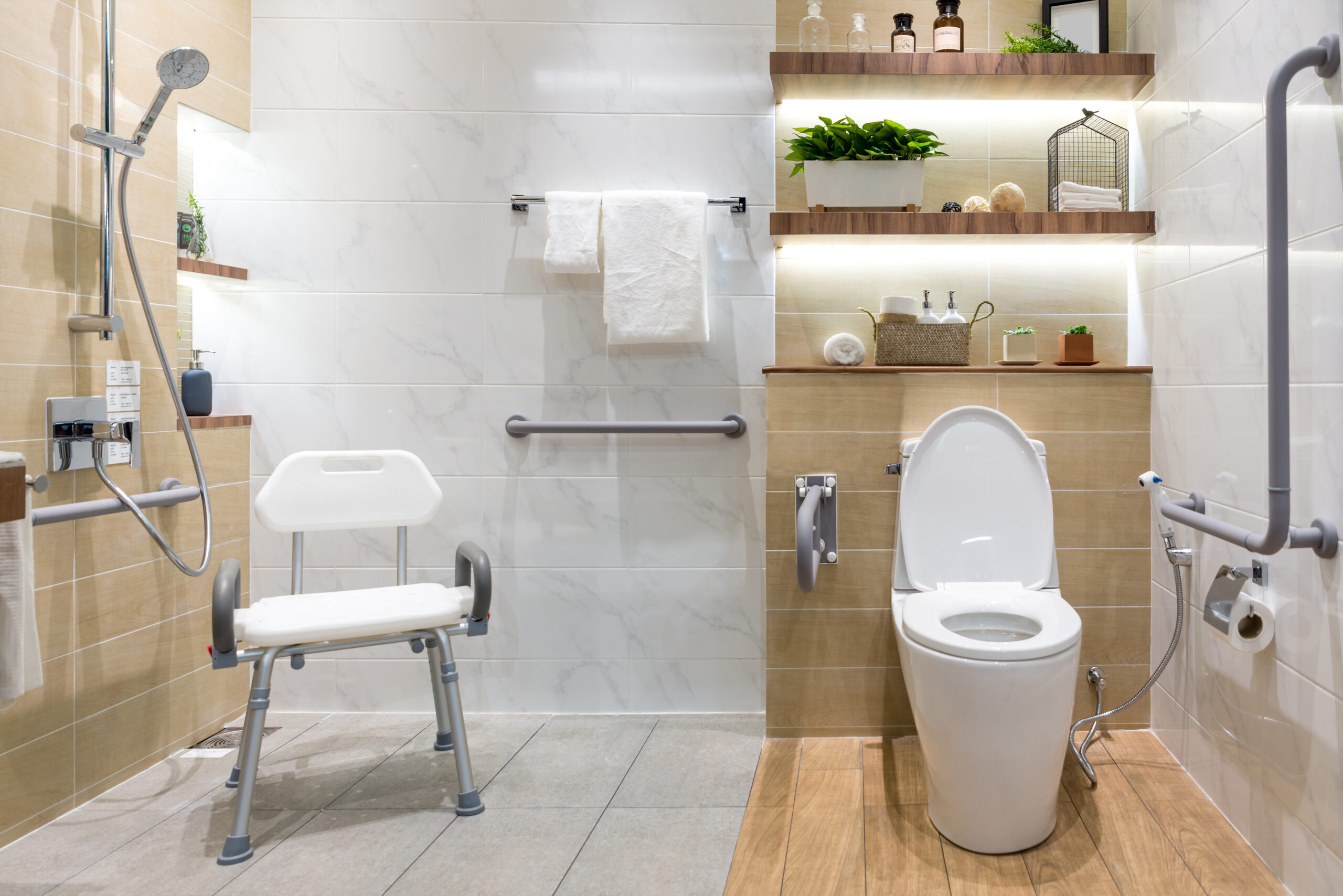Wet Room Wonders for Elderly Comfort
Explore how transforming your bathroom into a wet room can significantly enhance the safety and comfort for the elderly, making daily routines more manageable and less stressful.

Why Choose a Wet Room for Elderly Accessibility?
As we age, our mobility may decrease, making simple tasks like bathing more challenging. That's why choosing a wet room for elderly accessibility is a smart choice. Unlike traditional shower enclosures, wet rooms eliminate trip hazards by removing the need for a step or curb to enter the shower area. This makes it easier for elderly individuals, especially those with poor mobility or using mobility aids, to navigate the space safely.
In addition to the safety aspect, wet rooms also offer convenience and ease of use. With everything in one open area, there's no need to manoeuvre around obstacles, allowing for a more seamless bathing experience. The spaciousness of a wet room provides ample room for caregivers or mobility devices, ensuring that assistance is readily available when needed. Overall, a wet room promotes independence and helps individuals maintain their dignity while bathing.
Essential Safety Features of a Wet Room
To further enhance safety in a wet room, several key features can be incorporated. One essential safety feature is a shower seat, which provides a stable and comfortable place to sit while showering. This is particularly beneficial for elderly individuals who may tire easily or have difficulty standing for long periods.
Another important safety feature is shower grab bars. These sturdy bars can be strategically placed throughout the wet room, offering support and stability when moving around. Grab bars can assist with balance and prevent falls, giving elderly individuals added peace of mind.
Additionally, anti-slip flooring is crucial in a wet room to prevent accidents caused by slippery surfaces. The flooring material is designed to provide traction even when wet, reducing the risk of falls. By prioritising safety features like shower seats, grab bars, and anti-slip flooring, a wet room becomes an even safer bathing solution for elderly individuals.
Design Considerations for Optimal Comfort and Safety
When designing a wet room for elderly individuals, it's important to consider their comfort and utility needs. One key consideration is the placement of fixtures and
fittings. By strategically positioning the shower, sink, and toilet, the wet room can be optimised for accessibility and ease of use.
Another aspect to consider is the use of contrasting colours and textures. This can help individuals with visual impairments distinguish between different surfaces and navigate the space more confidently. Furthermore, incorporating adequate lighting in the wet room is crucial for visibility and safety.
Lastly, it's important to ensure that the wet room for elderly people is easy to maintain. Choosing durable and low-maintenance materials for walls, floors, and fixtures can make cleaning and upkeep more manageable for elderly individuals or their caregivers.
The Benefits of a Step-Free Shower Experience
A step-free shower experience in a wet room offers numerous benefits for elderly individuals. The absence of a step or curb eliminates the need for lifting legs, making it easier to enter and exit the shower area. This can be particularly beneficial for those with limited mobility or using mobility aids, as it reduces the risk of tripping or falling.
In addition, a step-free shower allows for a more spacious and comfortable bathing experience. There are no constraints or obstacles, providing freedom of movement and making it easier to manoeuvre during showering. This can greatly enhance the overall comfort and enjoyment for elderly individuals, promoting a sense of relaxation and well-being.
Furthermore, a step-free shower experience fosters inclusivity. It allows elderly individuals to bathe independently without the need for assistance, promoting self- confidence and preserving their dignity. It also facilitates easier access for caregivers or medical professionals, ensuring that necessary support can be provided when required.
How to Get Started with Your Wet Room Transformation
If you're considering transforming your bathroom into a wet room to enhance accessibility and safety for elderly individuals, here are a few steps to get you started:
1. Assess your needs: Evaluate the specific requirements of the elderly individual, taking into account their mobility limitations, health conditions, and preferences.
2. Consult with professionals: Seek advice from experts who specialise in accessible bathroom design. They can provide valuable insights and recommendations based on your unique situation.
3. Plan the layout: Work with the professionals to determine the optimal layout and placement of fixtures, fittings, and safety features in your wet room. Consider factors such as space constraints, accessibility, and ease of use.
4. Select appropriate materials: Choose materials that are durable, waterproof, and easy to maintain. Opt for anti-slip flooring options to ensure safety in wet conditions.
5. Install safety features: Incorporate essential safety features like shower seats, shower grab bars, and non-slip flooring to enhance accessibility and prevent accidents.
6. Regular maintenance: Schedule regular maintenance and cleaning to keep your wet room in top condition. This will help prolong its lifespan and ensure optimal safety and functionality.
By following these steps and working with professionals, you can successfully transform your bathroom into a wet room that caters to the specific needs of elderly individuals, providing them with a safer and more enjoyable bathing experience.
If you would like more information on our walk-in baths, walk-in showers and wet rooms, contact us for a free brochure or call free and speak to a member of our team.




